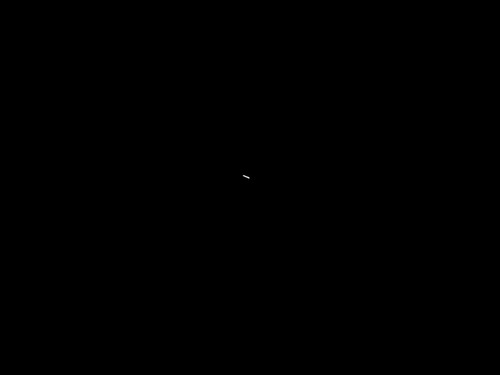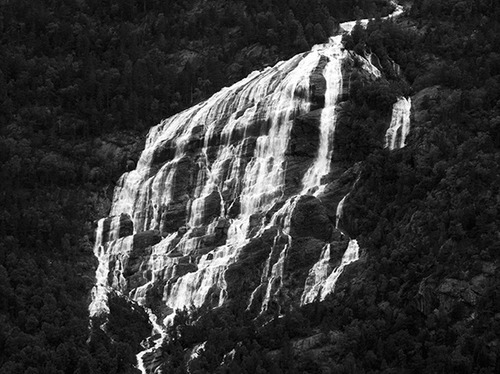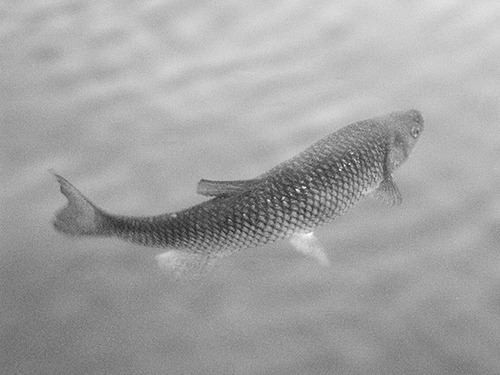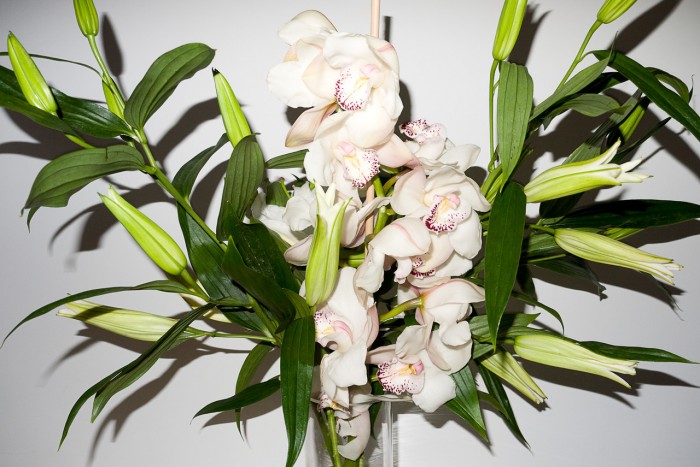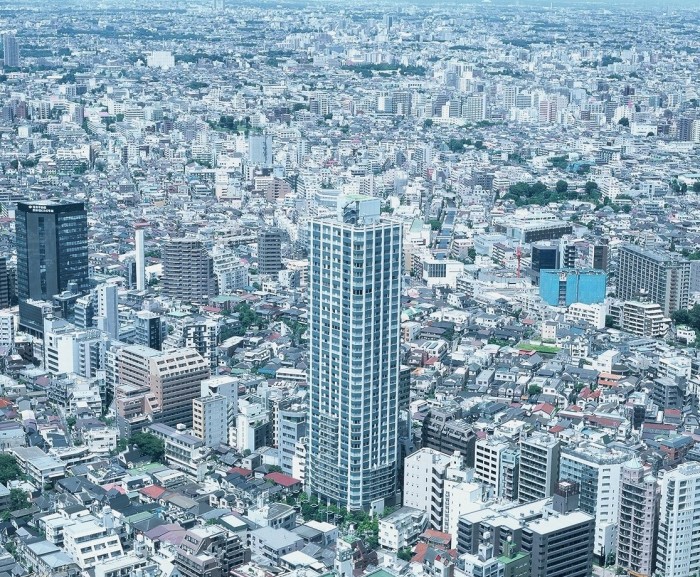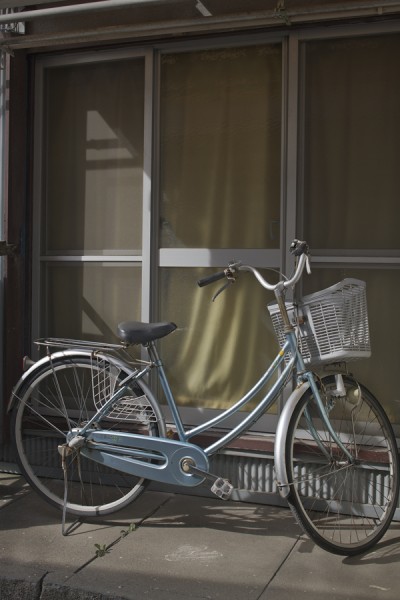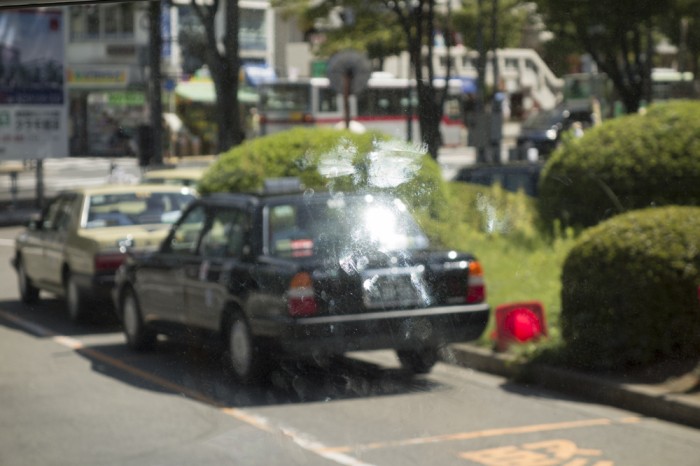Terry Richardson has never been a favorite photographer of mine. Still, it is worth taking a look at his blog 1 to see the photos that he took around the time of his mother’s death. (Find September 18 and scroll back from there.) The photos are a direct, “unflinching” look at this experience, in the words of my esteemed colleague John at American Photo 2. This episode has changed my view of him, if only a little, for all the reasons that John lays out in his article.
The only thing I would add is that the photos reminded me a lot of Nobuyoshi Araki, another photographer who, rightly or wrongly, is sometimes dismissed as a simple pornographer. A couple of years ago, Araki had a show at Rat Hole Gallery in memory of his recently-deceased cat. I went to the gallery thinking that it would be awful, and some part of me was ready to write him off entirely. But the show was genuinely moving, and I haven’t looked at Araki in the same way since. I’m really not sure how dramatically my opinion of Terry Richardson will change, but for a few days at least, he had me thinking of him in terms of Araki.
Tags (1)
Nobuyoshi Araki60s, Nakahira
70s, Kitai?
80s, Araki?
90s, HIROMIX
00s, Kawauchi
(10s, ???)
This is a broad arc, tracing the movement from “conscious” to “unconscious.”
Certain Zen schools conceive of seated meditation as a practice intended for the obtaining of Buddhahood, others reject even this (apparently essential) finality: one must remain seated “just to remain seated.” Is not the haiku (like the countless graphic gestures which mark modern and social Japanese life) also written “just to write”?
Roland Barthes, “Empire of Signs” 1
And so, earlier this summer, I finally came to read “Empire of Signs,” Roland Barthes’ book on Japan. Barthes is probably not my ideal writer, but I appreciate his efforts to stress that he is creating his own version (“system,” as he would say) of Japan, in other words that he has no special knowledge of the country. The book is not trying to produce any “insight,” instead it’s a reading of Japan through Western cultural values. This seems like a useful perspective to adopt—I tried to articulate this myself two and a half years ago 2. I now have almost four years’ worth of experience living in Tokyo, and while I recognize that that has some value, I still don’t feel that I can claim any privileged knowledge of Japan. More than ever, I’m trying to explain Japanese photography in terms that could be understood by a Western audience; I don’t believe that Japanese photography is essentially any more difficult to understand than Swedish or South African photography.
As a side note, John Gossage’s recent photographs of Japan 3 show the same attitude as Barthes, and the title of the book, “The Code,” is extremely appropriate in this sense.
Let’s return to Barthes on haiku. At times, as in his descriptions of food, he allows himself to be drawn into an almost exaggeratedly poetic style, but here, his analysis is more careful. Earlier, Barthes makes another observation: “the brevity of the haiku is not formal; the haiku is not a rich thought reduced to a brief form, but a brief thought which immediately finds its proper form.” It’s possible that this could provide a way in which to understand photographers like Rinko Kawauchi, who might be photographing “just to photograph.” What if this relatively recent way of photographing was actually the expression of an ancient Japanese technique, condensing centuries of culture into a singular moment of beauty?
This view has already been expressed on the internet 4, but it’s a huge leap to suggest that contemporary Japanese photographers are thinking about haiku. I’d go even further and say that only a Westerner 5 would mention haiku here. It’s a kind of pipe dream, perhaps fueled by exported Ito En bottles 6. Bringing up haiku as a way to interpret contemporary photos is like saying: “so, these photographs can only be explained through this very culturally specific medium which, by the way, also resists any logical explanation as part of its form.” Japanese photographers do often say that they don’t know why they take their pictures, but they don’t need to use this particular crutch.
Barthes was canny in finding a way to speak about even the most “Japanese” parts of Japanese culture without adopting a culturally essentialist perspective. Observers of Japanese photography would do a service to the photographers here by emulating this stance.
Tags (1)
Rinko KawauchiRecent graduate of the rigorous, thus prestigious, Yale MFA, painting program, [redacted]’s solo show, [redacted], debuts here at [redacted] in Tokyo, from September 7 through October 13, 2012.
Gesture in painting not only refers to the brush stroke and form of line, but to also materiality in canvas— including substrate and structure—, paint, application, and display with self-conscious awareness of installation.
From the pompous (but justified!) attitude to the laughable punctuation, this is one of the worst art press releases I’ve seen. I won’t easily forget the phrase “rigorous, thus prestigious”…
Tags (0)
Things continue to move along at PH 1: we’re going to be participating in an event called “10×10 Japanese Photobooks Reading Room,” taking place at the same time as the NY Art Book Fair 2 in a space just across the street. This ICP 3-sponsored event is a room where you can look at a total of 100 photobooks selected by 10 “specialists.” That’s a title I thought I’d managed to shed forever, but…
In all seriousness, it looks like a worthwhile event, and I’m guessing that it will be the first time many of these books have ever been in the US. Here are the details:
10×10 Japanese Photobooks Reading Room 4
ICP – Bard MFA Studio Space
24-20 Jackson Avenue, 3rd Floor, Long Island City
(Across the street from MoMA PS1 and the New York Art Book Fair)
9/28 (Fri) through 9/30 (Sun), 3-9 pm
Opening reception: 9/28, 7-9 pm
FB Page, if you’re into that kind of thing 5
Edit: We won’t actually be there. (Just the books)
Tags (1)
PHThis is a trailer for a documentary about the photographer Kikujiro Fukushima, who has a long history of politically-involved photography in Japan’s post-war period. Here is a rough translation of the text in the YouTube description:
Rebellious post-war photographer, Kikuji Fukushima, 90 years old. His career started in 1966, shooting photographs in Hiroshima, and he continued to point his lens towards the upheaval of the post-war period: the atomic bomb aftermath, Sanrizuka, Anpo Protests, Todai Protests, etc. His goal is to communicate the truth through his photographs. He once infiltrated and photographed Japan’s Self-Defense Forces; after the publication of these photos, he was beaten by thugs and his house was set on fire. Still, he continued to photograph. He estimates that he has taken around 250,000 photographs up until now. “The entirety of Japan is basically a lie,” he says. He refuses to accept a government pension, and lives together with his dog. In the middle of this quiet existence, he naturally continues to raise questions about modern Japan. Just at the time he was beginning to relate his “last testament” towards Japanese people (in the form of this documentary), the Tohoku Earthquake broke out. After the accident at Fukushima Daiichi, Kikujiro Fukushima decided to make his last trip to demand the truth…
Here are some of Fukushima’s quotes from the trailer:
“For a photographer, it doesn’t matter if you are against the law” (0:10)
“I want to stir up what’s kept hidden.” (0:38)
“It’s our job to photograph, so, uh, sorry!” (1:26, my favorite)
It should not come as a surprise that the older generation is the leading the way with politically-concerned photographs in the wake of the 3/11 disaster. There are many reasons that the younger generation has avoided making this kind of work, and I can’t begin to tackle them seriously here. (I can’t say I know all the reasons, in any case…) Still, we can now pose the question that I can’t get out of my head: why is it that, after producing a generation of radical photographers in the 1960s, contemporary Japanese photographers have almost completely lost any sense of political responsibility in their work???
Seeking out the visible, documenting it and presenting it through the medium can have meaning, but I derive no value from that. For example, isn’t it the case that if you research a certain subject you wish to photograph you will find that there are already tens of thousands of images related to that subject floating around? Confronted by this situation, I feel that even if I can create a slightly better photographic image, it will still feel like squirting a water pistol underwater.
Seung Woo Back, interviewed in “Seung Woo Back: Nobody Reads Pictures” 1
The last quote I put up from this book 2 received a number of comments which showed varying degrees of denial about the situation of making photographs in 2012. I am not asking everyone to stop pointing their lens-based image-creating devices at real-world phenomena. Do I even need to make that clear? To be really plain about it, this situation isn’t anything more than the air we are breathing, or, you know, the water in which we’re swimming. It’s depressing to think that this thought would be considered inflammatory when it’s so obvious.
We have talked around the concept of a goal, which I would venture to say goes beyond questions of representation, or aesthetics. This is why Back is skeptical about taking the “slightly better photographic image.” If that aesthetic effect also constitutes the entire goal of the work itself, the work is useless, i.e. it has no real effect, because this effect is immediately canceled out. John 3 brought up Tumblr, which I think that can show why this is true: just look at the volume of aesthetically pleasing images that a user like jesuisperdu 4 posts every day. Like Back, jesuisperdu also puts forth an argument against an aesthetically-motivated photography, because whatever single photograph you take, there’s a Russian teen who can take one that’s just about as good. The challenge for photographers is not to find a style but a goal.
